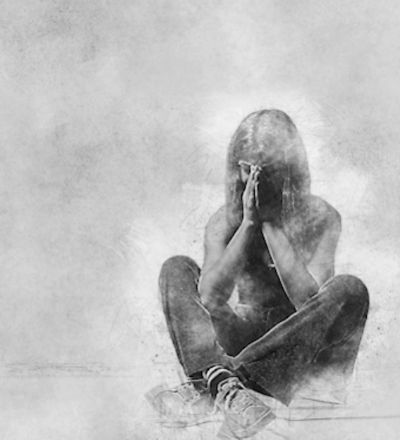Donate
These reports represent hundreds of hours of research by the Unsilenced Investigative Research Team. As you review this report, please consider donating. Your contribution will help us continue our work advocating for survivors and youth. Every donation makes an impact, no matter the size. Thank you for your support!
Completed by:
The Unsilenced Investigative Research Team
The Troubled Teen Industry in New York
Impact Report
2022
Impact Report
2022
Introduction
The ‘troubled teen’ industry is a network of residential programs that claim to provide treatment for the behavioral and developmental needs of youth. The industry’s lack of transparency and accountability has led to widespread abuse of youth, resulting in hospitalizations, prolonged trauma and death.
Today, there are an estimated 120,000 – 200,000 minors in residential programs across the United States. These youth are placed each year by state child welfare agencies, juvenile justice courts, mental health providers, refugee resettlement agencies, school districts’ individualized education programs, and by parents.
Many of these youth have trauma histories, which are only exacerbated by being removed from their communities and institutionalized. Youth with lived experience describe these programs as being carceral, harsh, and abusive.
An estimated $23 billion dollars of public funds annually are used to place youth in residential programs. Daily rates for residential treatment ranges from $250-$800, costing up to $292,000 per year, per child.
It is overwhelmingly clear that our communities and agencies are over-relying on residential placements that are negatively impacting the youth they serve.
Introduction
The ‘troubled teen’ industry is a network of residential programs that claim to provide treatment for the behavioral and developmental needs of youth. The industry’s lack of transparency and accountability has led to widespread abuse of youth, resulting in hospitalizations, prolonged trauma and death.
Today, there are an estimated 120,000 – 200,000 minors in residential programs across the United States. These youth are placed each year by state child welfare agencies, juvenile justice courts, mental health providers, refugee resettlement agencies, school districts’ individualized education programs, and by parents.
Many of these youth have trauma histories, which are only exacerbated by being removed from their communities and institutionalized. Youth with lived experience describe these programs as being carceral, harsh, and abusive.
An estimated $23 billion dollars of public funds annually are used to place youth in residential programs. Daily rates for residential treatment ranges from $250-$800, costing up to $292,000 per year, per child.
It is overwhelmingly clear that our communities and agencies are over-relying on residential placements that are negatively impacting the youth they serve.

New York Statistics
$482+
Million Dollars
Federal funds spent on out-of-home child placement for New York youth in 2018.
$383+
Million Dollars
State/local funds spent on out-of-home child placement for New York youth in 2018.
$600
Per Day Per Child
New York pays facilities on average and advocates report that the state spends up to $800 per day for children with complex needs.
5,756
Foster Care Youth
placed in residential facilities through Child Welfare programs in 2019.
837
Juvenile Justice Youth
placed in residential facilities through Juvenile Justice programs in 2019.
- 513 minors were committed as part of a court-ordered disposition
- 318 minors detained while awaiting a court hearing, adjudication, disposition, or placement elsewhere
- 3 minors were voluntarily admitted to a residential facility in lieu of adjudication as part of a diversion agreement

New York Statistics
$482+
Million Dollars
Federal funds spent on out-of-home child placement for New York youth in 2018.
$383+
Million Dollars
State/local funds spent on out-of-home child placement for New York youth in 2018.
$600
Per Day Per Child
New York pays facilities on average and advocates report that the state spends up to $800 per day for children with complex needs.
5,756
Foster Care Youth
placed in residential facilities through Child Welfare programs in 2019.
837
Juvenile Justice Youth
placed in residential facilities through Juvenile Justice programs in 2019.
- 513 minors were committed as part of a court-ordered disposition
- 318 minors detained while awaiting a court hearing, adjudication, disposition, or placement elsewhere
- 3 minors were voluntarily admitted to a residential facility in lieu of adjudication as part of a diversion agreement
A New York Problem
A team of researchers reviewed 230 studies of residential treatment facilities from around the nation and found there was no evidence that they were effective.
In 2019, New York was home to 4,028,299 minors, including 15,717 minors in foster care.
New York has 92 Licensed Residential Facilities with a total capacity for 3,503 youth. The facility types with the highest capacity for housing youth in New York are:
- Inpatient Psychiatric Hospitals with a total capacity for 2,327 minors
- Private Psychiatric Hospitals with a total capacity for 573 minors
- Community Residence with a total capacity for 305 minors
- Residential Treatment Centers with a total capacity for 298 minors
Residential Facilities in New York cost the State and Federal government millions annually
- Residential treatment facilities (RTF) cost between $481.19 -725.73 per day Per Child.
- Children’s residential program (CRP) cost between $478.48 – 776.01 per day per child.
- Family Care Residential Habiliation cost between $69.97 – 110.21 per day per child. Services provided to Home and Community Based Services (HCBS)
The commissioner may provide program development grants to a voluntary not-for-profit organization developing a residential treatment facility.

Illustration by Spencer Holladay, USA Today Network; Getty Images
“Many kids don’t get help. Others never needed institutional care in the first place.”
Fred Clasen-Kelly, Amritpal Kaur Sandhu-Longoria, Rachel Berry, Brad Zinn, Kristen Johnson, Brian Gordon
The Fayetteville Observer
Current Oversight
New York requires Residential Facilities serving minors to obtain a license but allows for waivers by meeting one of the three following requirements:
The Office of Mental Health is responsible for licensing Residential Facilities, Community Residence and Inpatient Psychiatric Units that serve minors.
The residential treatment facility located in a rural area can demonstrate to the satisfaction of the Office of Mental Health the need for a waiver. The following sections of this Part are eligible for waiver:
- The Office of Mental Health may approve a resident capacity of less than 14 where the residential treatment facility can demonstrate that this limitation would adversely affect the services provided.
- The Office of Mental Health may approve the use of a physician in lieu of a psychiatrist where the residential treatment facility can demonstrate that a psychiatrist is unavailable to meet the requirement.
- The Office of Mental Health may approve the use of a person who has received a bachelor’s degree in one of the following areas, art education, drama, early childhood education, music education, physical education, psychology, rehabilitation, sociology or special education in lieu of a therapeutic recreation specialist in circumstances where the residential treatment facility can demonstrate that a therapeutic recreation specialist is unavailable to meet the requirement.
The residential treatment facility serves a specialized target population and can demonstrate to the satisfaction of the Office of Mental Health the needs for a waiver based upon the specialized needs of the target population.
The residential treatment facility has a physical plant with living units designed for more than 14 residents and the residential treatment facility can demonstrate to the satisfaction of the Office of Mental Health the need for a waiver.
Abuse and Neglect
Youth residing in Residential Facilities in New York are at-risk for abuse, neglect and long-term harm.
New York determined that at least 102 Group Home and Residential Facility Staff Members and 222 Foster Parents caused or knowingly allowed the maltreatment of a child in 2020
New York State Failed to Provide Legally Required Mental Health Care to Kids, Lawsuit Claims
New York’s Medicaid program has caused young people with serious mental health conditions to suffer unnecessarily, ending up in hospitals and residential treatment programs because they can’t access vital community services.
Because of the lack of home and community-based mental health services, Medicaid-eligible children across New York today languish as their mental health conditions deteriorate. Without intensive services in their homes and communities, children with mental health disabilities are unnecessarily placed in psychiatric hospitals and similar institutions for extended periods, where they are separated from their families and communities and fail to thrive.
Lawmakers, parents say state agency exploiting ‘loophole’ that prevent disabled from receiving least restrictive care. The parents of adults with conditions such as autism say they are being forced by a state agency to choose between sending their child to a fenced-in institutional facility in the far reaches of the Adirondacks, or face the prospect of losing funding for their long-term care.
Media Coverage
- Jun 8th, 2005 Melee Keeps Spotlight on Hard Life at Academy New York Times Kirk Semple
- Aug 18th, 2005 School For Troubled Youth To Issue Tuition Refunds New Work State Office of the Attorney General
- Aug 28th, 2005 WWASPS affiliated school issued substandard diplomas, negotiates settlement The Salt Lake Tribune Kirsten Stewart
- Jun 6th, 2006 Woman distraught: Denied visit with sister at Ivy Ridge Academy WWTI-ABC
- Aug 31st, 2006 Board of Ed to decide accredition for troubled-teen school NCPR Greg Warner
- Dec 7th, 2006 Academy at Ivy Ridge Not A School I Speak of Dreams
- Mar 4th, 2007 State Facilities’ Use of Force Is Scrutinized After a Death New York Times Cassi Feldman
- Aug 20th, 2007 The School of Shock Mother Jones Jennifer Gonnerman
- May 5th, 2008 When Tough Love is Torture– And How to Stop It (Updated) Huffington Post Maia Szalavitz
- Jan 22nd, 2010 The Lost Boys of Tryon New York Magazine Jennifer Gonnerman
- Sept 2nd, 2018 ‘It’s Like, Who’s Next?’: A Troubled School’s Alarming Death Rate New York Times Michael Wilson
- Apr 10th, 2019 ‘When my children came back, they were broken’ The Royal Gazette Fiona McWhirter
- Jul 22nd, 2019 Freedom Village: Faith-based organization has long been followed by reporters, and creditors Democrat and Chronicle Gary Craig
- Aug 12th, 2019 Freedom Village shuts down in New York after four controversial decades Democrat & Chronicle Gary Craig
- Apr 4th, 2020 Another former Freedom Village student alleges sexual abuse at Yates County campus Democrat and Chronicle Gary Craig
- Dec 7th 2020 The Writer Taking on the “Troubled Teen” Industry Narratively Marialexa Kavanaugh
- Jan 15th, 2021 Troubled: The Failed Promise of America’s Behavioral Treatment Programs – Next Big Idea Club Kenneth R. Rosen
- Aug 6th, 2021 ‘Every single night I have nightmares of that place’ – Buckhannon woman shares her experience with the ‘troubled teen industry’ Wboy Shayla Klein
- Aug 20th, 2021 ‘My parents were taken advantage of by evil people’ – How the troubled teen industry manipulates parents Wboy Shayla Klein
- Oct 7th, 2021 Former Summit Students Make Claims About Abuse In Nyack School The Impact Nichole Alarcon and Ranae Morgan
- Mar 19th, 2022 How I survived and helped shut down Freedom Village U.S.A. Alliance Against Seclusion and Restraint Jasmyne Arianna
Additional Information
Unsilenced Program Database: New York Programs
Contact: info@unsilenced.org
The information provided within UnSilenced.org is for general informational purposes only. All information is provided in good faith. However, we do not warrant, endorse, guarantee, or assume responsibility for the accuracy or reliability of any information offered by third-party posters, testimonials, comments, or submissions. Most information posted reflects the opinion of the writer and does not directly reflect the views, or positions of the owners of UnSilenced.org
Read More
